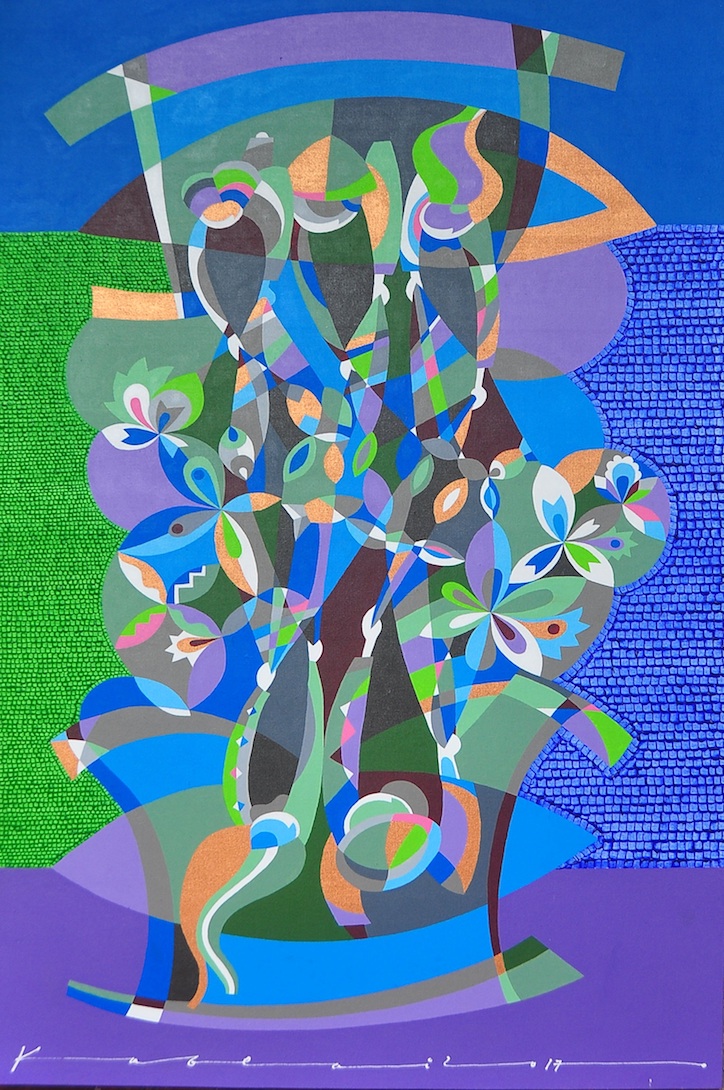
A 25-foot durian greets arriving passengers at the Davao International Airport. Besides Giant Durian Genesis Lore, there are more of these around Mindanao. Artist Kublai Millan has created larger-than-life monuments set in parks, churches and landscapes. His sculptures demand passers-by to pause and pay attention. Among them are the statue of Sultan Kudarat in his namesake province the Risen Christ in Tagum, Davao Del Norte, and the roundabout depicting interfaith unity among indigenous peoples, Muslim and Christians at Surallah, South Cotabato.
Kublai Millan carves his name behind the easily recognizable monuments, murals and paintings depicting unique Mindanawon themes. The multi-awarded artist makes ten monuments a year. “Dahil walang pumapansin sa’kin, ginawa kong malaki ang art ko,” he says of his works.
Visa Rejected
Sometime in the mid 90’s, Kublai ventured to Manila and took up Visual Communication in UP Diliman. He went into advertising after graduation but quickly realized it was not to be his path; what stayed constant was his desire to go back to his native Mindanao.
“I came home hounded by personal demons, unable to escape the dark nights of my soul,” shares Kublai of his rough homecoming. To quiet the noise within, he turned to art for catharsis, creating the looming works at Ponce Suites—a family owned four-storey hotel-cum-gallery that is home to thousands of art pieces. The works around the place are the result of his artistic journey. He tried everything, from painting to photography, to myriad installations. The hotel is now widely-known in the international backpackers’ circuit as the only gallery you can sleep in.
One particular incident that determined the scale of his works was when he applied for a US visa for an exhibit. “Perhaps because of my Muslim sounding middle name, Mudjahid, I was denied. I then vowed to make sculptures bigger and taller than the biggest American,” Kublai shares.

Personal Demons Purged by Art
Kublai uses his larger-than-life works to convey a specific message. His Ground Zero monuments are an offering to victims of Typhoon Yolanda in Leyte and Typhoon Pablo in Compostela Valley.
Kublai has always fought not just for Mindanawon representation, but for the reclaiming of the Philippine identity through rediscovering our roots: “Behind the art are the indigenous country’s wisdom. Finding the indigenous self may give us a better view. Malaking bagay na makilala ito. Hindi sapat ang pagsabi ng Pilipino ako kung hindi natin ito kilala.”
His closeness with the indigenous peoples is not just cerebral. During a time of personal strife when he almost lost his life, Kublai knew he needed to flee. He stayed for months in remote tribal areas of Mindanao, Palawan and Camiguin. “This was what I call my Hermitage Period. I lived as a monk,” says Kublai. His encounters prompted him to reconnect with his roots. “Every time I talk to an elder or datu, I realized how important rootedness is.”
He eventually settled in a remote area of Kapatagan in Davao Del Sur. “It was around 2005 that I built the Agong House. Agong means ‘gong.’ I built it because I discovered that to vibrate from within, you have to hit yourself hard to create the most beautiful sound.” In 2007, he created Buddha in Buda, a 70-foot seated Buddha in the middle of sprawling mountains at the boundary of Bukidnon and Davao—hence the name Bu-Da. “I was finally finding my middle path.”

Earth Over Air
Finding love in 2003 bore him two sons. It led the artist to gravitate towards projects like the Children of Peace Park in North Cotabato. He had begun to find a measure of peace. “I saw the need to build on the ground so that my children can be grounded, literally and figuratively. [I wanted them to] roam and play, and touch dirt.”
His children were then living in the open-air penthouse of Ponce Suites. “In the penthouse, it was like their lives were floating on air and that’s not good. So I settled on some land in Ma-a where I built my home.”
Kublai’s current residence in Ma-a, Davao is his living space, studio, garden, and farm rolled into one. This is where he breathes life into his monuments, in a backyard workshop filled with wood, steel and repurposed objects.

Mastering the Darkness
His creative explorations in the physical, mental and spiritual realms led to the current themes of Probinsaya, Dalisaya and Galaktika. This was the starting point of his artistic journey to get to where he is now.
The triptych, unveiled at ManilArt 2017 as Kapalipayapaan, captures the sum total of his sojourn thus far. Each title has “happiness” or “saya” snuck in, much like the vibrancy of Kublai’s chosen colors and each painting’s respective message. Probinsaya focuses on ordinary people living happy lives. He refers to this painting as “people looking at each other.”
Dalisaya is “looking down,” reflecting the posture of bowing to see the minute details that are not normally noticed. It captures how he felt when his art was finally flourishing. Galaktika is “looking upward,” painting the stars. Kublai believes that “the right to paint anything that only the imagination can limit is a right to be earned only after an artistic journey.”
Kublai continues to find peace in the continuous artistic endeavors, in his work with the communities, and with his fellow Mindanawon artists. The darkest of times, he believes, have passed; he continuous soul searching now reaps the complex joy of tireless creation.
Written By Rissa A. Coronel